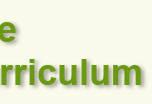|
MAC3 and Environmental Science
The Carbon Dioxide Challenge - How Many Plants Make a Future?
The story of Biosphere 2 is introduced to the students in the context of a discussion of the carbon cycle, climate change, and CO2 accumulation in the atmosphere. The lab activity focuses on the role of photosynthesis in a sustainable future. Students explore the effect of photosynthesis and respiration in one liter ‘closed systems’ containing plankton, marine plants, and fish. By calculating carbon dioxide uptake and production in these systems, students predict a plant: animal ratio sufficient to maintain a system in carbon dioxide ‘balance’ for one hour. Building and testing the system, then extending it to a longer time period, demonstrates to the students that carbon dioxide accumulation, even in a simple system for a short time period, is not a trivial matter. Students apply concepts from biology, solution chemistry, and exercise considerable quantitative reasoning from real data as they design and fine-tune their systems.
Organisms, Mathematics, and the Environment
This course will focus on the basic concepts of ecology, including ecosystem structure and function, energy flow, biochemical cycles, limiting factors, population dynamics and community interactions. Emphasis is placed on the use of the scientific method to investigate man's current environmental problems and to propose possible solutions. Meets A.A. degree lab science requirement.
Learn-and-serve Environmental Anthropology Field (LEAF) School
The LEAF School combines academic instruction employing service-learning with an AmeriCorps program so that students earn college credit and a scholarship of $1,000 – 2,362 while working with tribes, businesses, governments and non-profits to make fishing, farming and forestry more sustainable. Students can earn 15 credits over the summer or enroll for just 5 credits in Human Ecology in spring and fall. Field projects with quantitative elements include surveys of salmon and shellfish populations, growth patterns and habitats; monitoring of vegetation growth and vitality in restoration projects; assessments of stream profiles before and after installation of large woody debris; and surveys of human recreation on an uninhabited island with a nature preserve.
Space On Earth: An English, Math, and Science LC:
"Space on Earth" is a learning community linking Composition I, Basic Algebra II, and Environmental Issues. In this learning community, we will explore our relationship with the natural world, and take a constructive approach to today's environmental issues. Writing, Mathematics, and Science instruction will be interrelated throughout the semester as we address this theme.
Environmental Science:
"The Heat is On" is a learning community combining environmental science concepts with math. The team-taught course is project-based and centers around the topics of home heating, home lighting and personal food choices. Students connect these topics with energy consumption and explore alternative choices of conservation measures through project-based models they create.
Environmental Mathematics
This project is to create an integrated Mathematical Biology course based on Environmental Science and Math in Nature, Art & Life courses.
|









